In our “5 questions with…” section, we introduce you to our PIABO colleagues and share their expertise in communication and PR strategies. Today, we would love you to meet: Maria Samos Sanchez, Unit Director with over 30 years of experience in communications. We talked to her about her beginnings, PR milestones and the future of PR as well as her role as Head of Corporate Communications at PIABO.
1. Maria, you’ve been in the PR business for over 30 years. Can you tell us about your beginnings?
When I started in communications, there were neither cell phones nor the Internet. I worked with a dial phone – not the ones with buttons, but with a rotary dial. I wrote the first press releases on an electric typewriter and then sent them to editorial offices by mail. Many of them were using telex, a system where texts were written by punched tape and then transmitted as well. That was really bad, because once you made a mistake, you had to start all over again. Luckily, with the invention of the fax, that changed. At least we didn’t have to send letters.
Invitations to press conferences or events were always sent out by letter and were then also very well attended and full. Today, this would almost only be possible when there are big media stars or hip brands involved. We also made a lot of phone calls and told our story on the phone (something that many PR consultants nowadays fear). There were also more direct interviews. Back then, we all knew the journalists personally and were very well connected, at least by phone. After all, there weren’t that many PR agencies in Germany, and the profession itself wasn’t introduced until the late 1980s. Journalism was the only profession offered at university.
2. How has the PR industry changed since you started? Are there any milestones?
I’ve experienced so many technical milestones that certainly can’t be experienced again in such abundance. The first milestone was the fax, and the next was the computer itself. I remember that many medium-sized companies couldn’t even afford a computer at first. Back then, we were still distributing press kits on paper with floppy disks. For us, that was a huge leap into the future. At that time, we also had some kind of “intranet” where colleagues could exchange information. At the beginning of the 90s, the first e-mail addresses appeared. I also remember that we had a single address for everyone, at that time via Compuserve, and when you wanted to connect, there was a loud beeping on the line. When the Internet came to our newsroom in the mid-90s, it felt like a real miracle to us, but one we had to learn how to decipher.
Google also made all encyclopedias and reference books disappear from our shelves. At that time, everything was freezed when the lines were interrupted. However, personal contact and phone calls were still the most important part of communication, although digitization has already cut back on this personal contact a lot. And today, people are more likely to be in touch on chat or social channels anyway than to pick up the phone and speak directly – personally, I would like to see people pick up the phone more often again, the personal conversation is simply something else.
We also used to have much more time to deal with topics or products. Today, everything has to be communicated very quickly, because a similar, possibly better and more efficient product or service might be developed around the corner just yet.
3. What is your resume after 30 years in the business?
Print media, radio and TV used to be the focus of communication. This is where topics and people had to be placed. The online world only came into communication with the first websites. When I think back to the fact that before the 2000s, PR was always part of marketing, it’s amazing to see that PR is now independent. Unfortunately, there are still many companies, especially medium-sized ones, that have not yet made this separation and like to adapt their PR stories from their marketing stories. The understanding of how PR works has unfortunately not yet reached everyone’s minds (but we’re working on that, obviously).
I must say, after 30 years in the PR business, I’m overwhelmed by the possibilities we have these days. Digitization has led to countless possibilities that I would never have dreamed of in my early years. PR has also become much more diverse in terms of the people and the storylines. I simply love my job!
4. Not only are you one of PIABOs Unit Directors, but also Head of Corporate Communications at PIABO. What is your task in this function, and how does Corporate Communication differ from PR for external clients?
PR for clients or PR for your own agency is not significantly different. However, being close to your own employer can be both positive and negative. It is somewhat more difficult to look beyond the obvious. To put yourself into the outside perspective is more difficult in corporate communications than for external clients I would say. But that’s exactly the challenge I love! On the other hand, the most interesting and tellworthy stories lie inside a company itself. We first have to look for and find these with external clients, while it’s a bit easier to find them in your own company.
In terms of the goal, client work and corporate communications are no different: We aim to achieve as many relevant publications as possible, to present the company to an audience through targeted media and social media presence. If we meet this requirement, we are successful.
5. 2022 is coming along soon. Where is PR heading? What can we expect in the future?
Anyone who wants to gain a foothold in PR these days should know that basics like writing a press release are subordinate. Above all, a PR consultant must master storytelling, must be familiar with all social channels and know what works best for which product or service, and must also be able to write texts suitable for SEO. Furthermore, he needs to know how SEA works and gain an understanding of how topics are positioned most effectively these days.
Personally, I also see the future in Artificial Intelligence. I’m sure that in less than ten years, no one will write articles themselves. Rather, AI-based systems will produce the content. On the contrary, other communication formats will have to be served. For example, back then radio was a big format; nowadays, we mainly focus on podcasts. That will only develop further. The importance of TV will decrease, while streaming will have a future for PR. I also think that in the long term, print magazines will no longer exist. Everything will be digitized, and maybe we’ll be walking around with implanted chips that will guide us through the world hands-free and without additional devices and reflect information onto our retinas. Who knows, really.


